Phase 2: Start cooperation with block neighbours with a light experiment
When people living on different sides of the block meet each other, they can discuss the courtyard with a larger group. It is possible to explore the willingness to engage in joint action at this point.
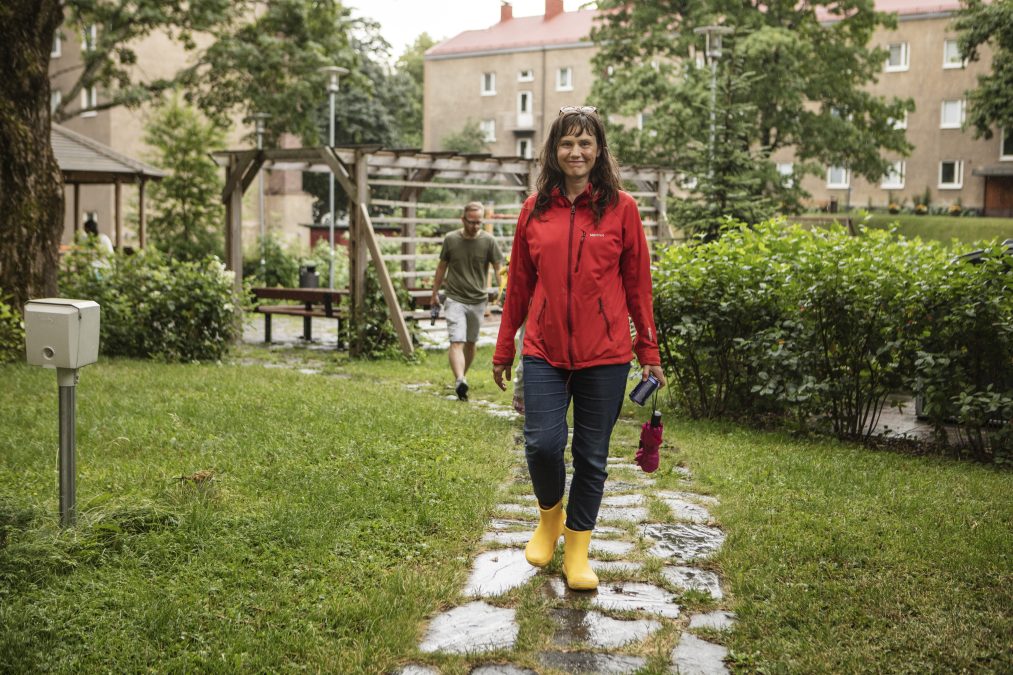
OBJECTIVE: Connections with neighbouring buildings and light joint experiments designed by residents.
MOTIVATION: Improved block relations, experiences of success.
Steps to start block cooperation:
Getting contact information
If you do not yet know the decision-makers of neighbouring properties, you can ask the property manager for contact details. The most common way is to go straight to the building door, where you will usually find the name of the maintenance company. So start calling: state your business and ask the maintenance company for the contact details of the property manager, and the property manager for the name and e-mail address of the chair of the board. Please contact the administration of the building in the case of a rental or right-of-occupancy building.
If the boards of the housing companies show interest right away, the boards may first convene among themselves. It is good to get a feeling for the participants’ ideas at the meeting: what is good and worth preserving in the courtyards, what is missing? It is also worth talking about possible renovations.
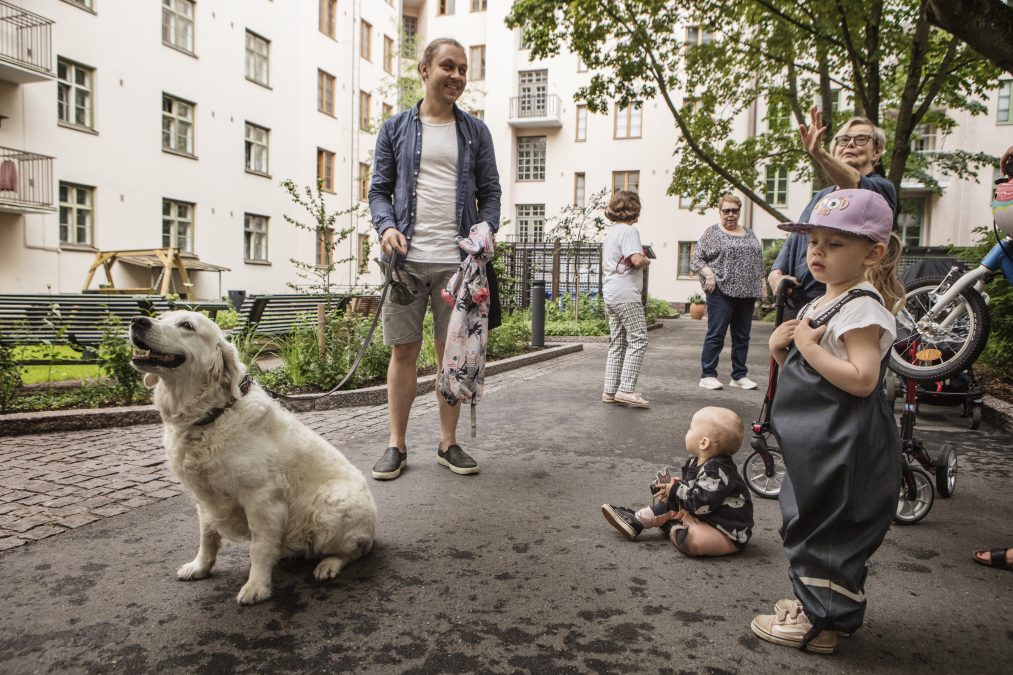
Setting up a joint communications channel
Discussion channels are needed for communications. A Facebook group should be set up for the residents of the block. Invitations to it should be posted in every building.
You can download a ready-made invitation here .
You should set up an e-mail group with the decision-makers of the buildings.
Meeting the decision-makers in person is not necessary. If board members and owners of the buildings do not have time to attend or do not attend, residents should soldier on regardless.
Courtyard event for the entire block
The objective of the casual event is to bring all residents interested in courtyards together, everyone from young people to old people and from tenants to shareholders.
The meeting should begin with a presentation round. A person appointed in advance to the role of discussion leader should lead the discussion and make sure that everyone gets to have their say. At this stage, leaders should not propose massive changes as of yet; instead, they should focus on listening to others: what matters to the people who are present, what is missing or what is needed in the courtyards? The meeting is about meeting new people and exploring their willingness to develop the courtyards together. Small groups are ideal for examining how the residents would like to develop the courtyards. At the same time, it is good to map any skills that residents themselves may have. Some avid gardeners, nature lovers, architects, project management professionals and so on may already live in the building.
People should be able to go around every courtyard in the block during the event: it will be fun to see a familiar courtyard from a new perspective. Use street chalk: you can sketch new visions on asphalt with a playful spirit.
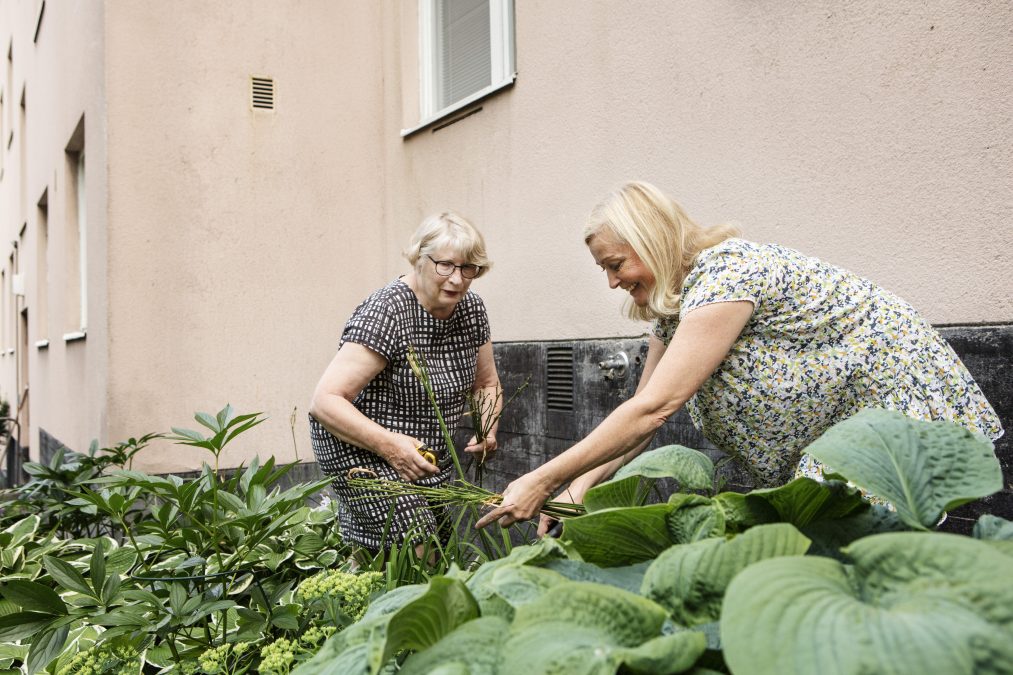
Establishing a courtyard committee for the block
At the same meeting, it is a good idea to establish a courtyard committee consisting of voluntary residents. The group should have a few residents from each building. They may be members of housing company boards and tenant committees, but that is not necessary: enthusiasm for courtyard improvement is more important.
After the meeting, the courtyard committee should examine the opinions heard at the meeting and send a summary of them to the residents and decision-makers of their own buildings. If there is no enthusiasm for courtyard development at this time, the group can be set up again in a few years’ time to approach the issue again. If there is interest, the courtyard committee may start to think about joint activities and maintain contact between neighbouring buildings.
The courtyard committee has no legal power, but supports housing company decision-makers and provides board and shareholder meetings with information. It is good to have meetings twice a year.
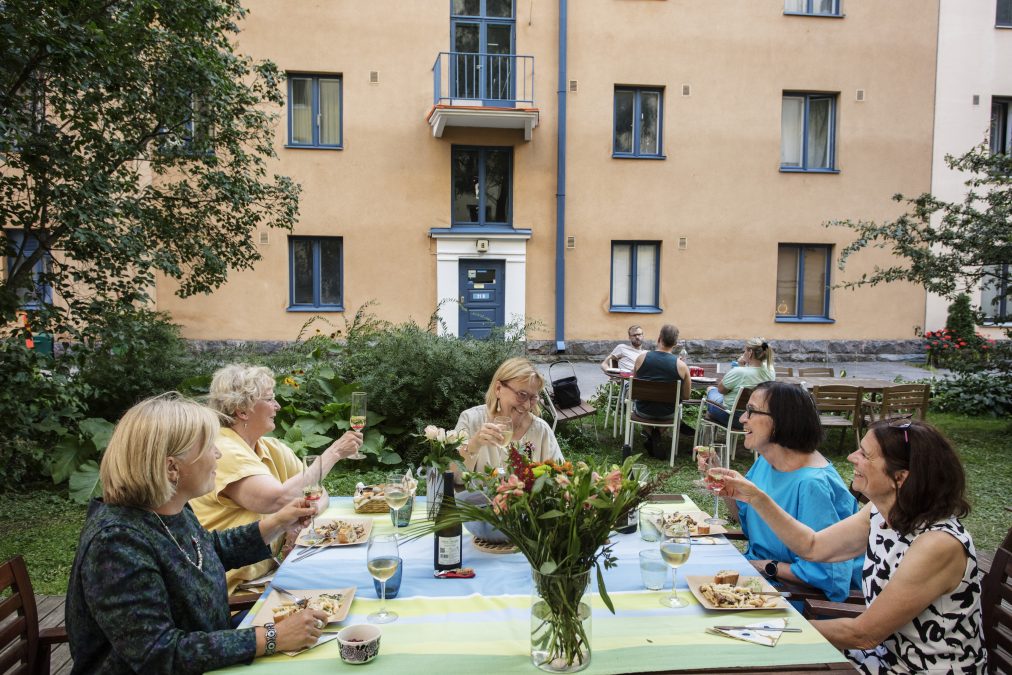
Light courtyard experiments
Now is a good time to think of natural activities for residents from neighbouring buildings. It will strengthen team spirit and lay the foundation for confidential long-term cooperation. Based on the meetings and surveys, the committee now knows what kinds of things residents want in their courtyards. As an experiment, it is good to choose something that will bring joy to as many people as possible.
Experiment ideas:
- Organise a block-wide bee You can make a joint order of soil, seedlings of summer flowers and useful plants and even cultivation boxes for all courtyards. If there are no visionary gardeners in the block, you can invite an expert from the local garden store to guide the residents in planting. This will cost a few hundred euros.
- Make a large insect hotel out of brushwood. You can build a home for bugs using branches and twigs from the yard with children.
- Organise a block party. You can place ladders against fences and help residents cross plot boundaries. You can organise different activities for children in the courtyards. Are there any volunteer performers in the buildings? Fire up the barbecue and bring out some juice pitchers.
- Place a joint order for cosy tables and chairs. You can buy outside tables and chairs for all courtyards interested in seating areas. You can install a pergola and plant climbing plants around the seating area.
- Discussion event. It may be a good idea to organise discussion events on energy renovations, geothermal energy and the use of solar power, for example. Do people want to cooperate between buildings and create a block courtyard?
- Experimenting with access for 12 months. If the residents want to test the shared use of their courtyards, the fences between the courtyards may be fitted with gates or open passages. The boards of housing companies may allow residents to walk freely from one courtyard to another for a year, for example. After the experiment, housing companies can assess the experience and decide on the future.
- Shared cultivation area for useful plants in the sunniest spot in the block. The housing companies can pay for water hoses and watering cans together. Make sure that everyone who wants to participate feels welcome.
- Spending time together and trying new hobbies. Outdoor yoga and pilates, yard games once a week. ‘Mölkky’, pétanque, croquet, frisbee, darts. A new courtyard tradition only needs one leader for each game day, and invitations can be distributed in stairwells and in the block’s group on social media.
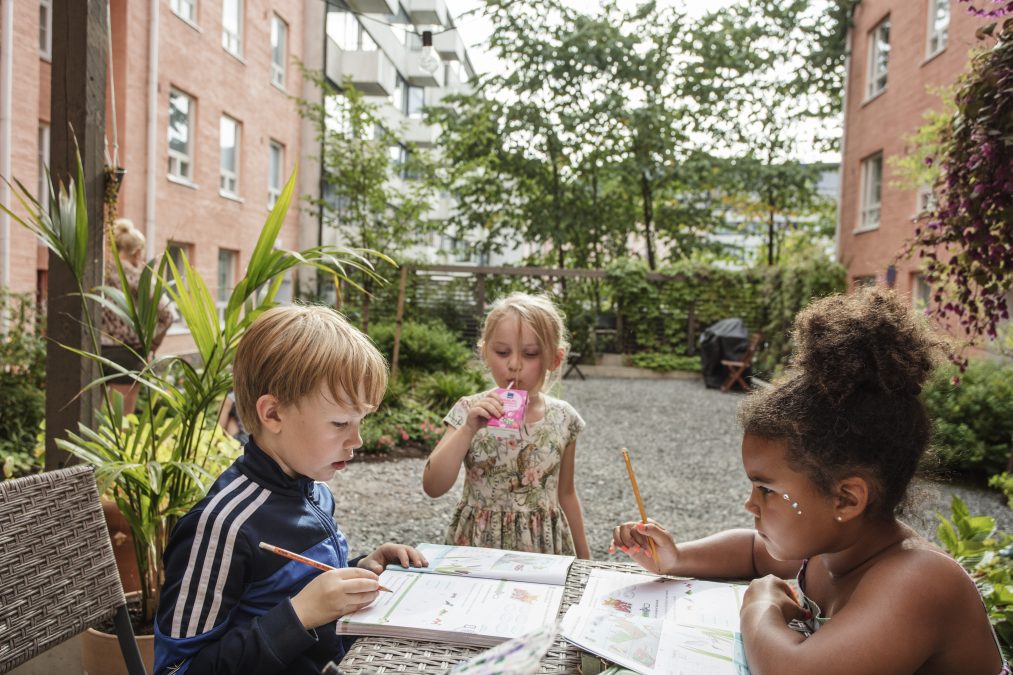
Courtyard expenditure calculations
At this stage, it makes sense to map the annual fees related to courtyard maintenance paid by housing companies in the block. The financial statements of the building company show how much the company pays for waste management, maintenance and property management. The financial statements can be requested from the board or the property manager of the housing company. These sums are important when the courtyard committee and the housing company boards want to compare how much similar services would cost if purchased jointly for the entire block.